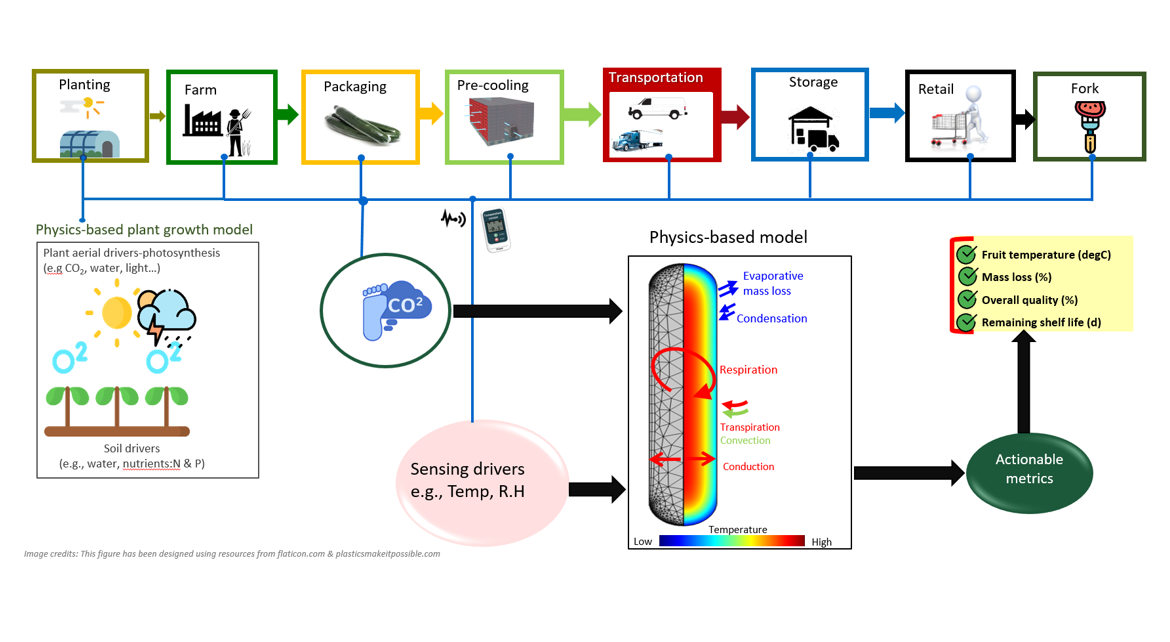To pack or not to pack fruit? An answer given by physics-based digital twins from flower to fork

Type. PACKME project
Funding. Empa (internal).
Duration. 2 Years (2021-2023).
Collaborations. Empa’s Lab 506.
Contact. Thijs Defraeye (supervisor).
Staff. Daniel Onwude (Scientist, principal investigator)
Project background
In this project, we aim to reduce the environmental impacts of the fresh produce supply chain. Such a reduction can be achieved by simultaneously minimizing postharvest food waste and the use of plastic packaging. To do so, we predict in-silico how fruits in a single shipment age throughout their entire life – from flower to fork – and propose an individualized, eco-friendly packaging strategy and material. As a case study, high-volume horticultural produce for Switzerland is targeted that is often sold packaged: cucumber and citrus, which are fruits of flowering plants.
Publications.
Onwude, D., Bahrami, F., Shrivastava, C., Berry, T., Cronje, P., North, J., Kirsten, N., Schudel, S., Crenna, E., Shoji, K. and Defraeye, T., 2022. Physics-driven digital twins to quantify the impact of pre-and postharvest variability on the end quality evolution of orange fruit. Resources, Conservation and Recycling, 186, p.106585. DOI
